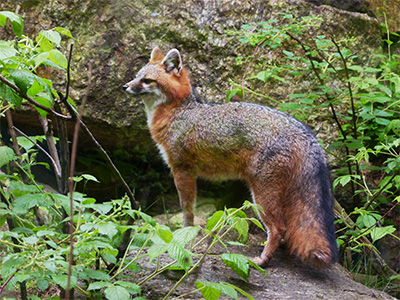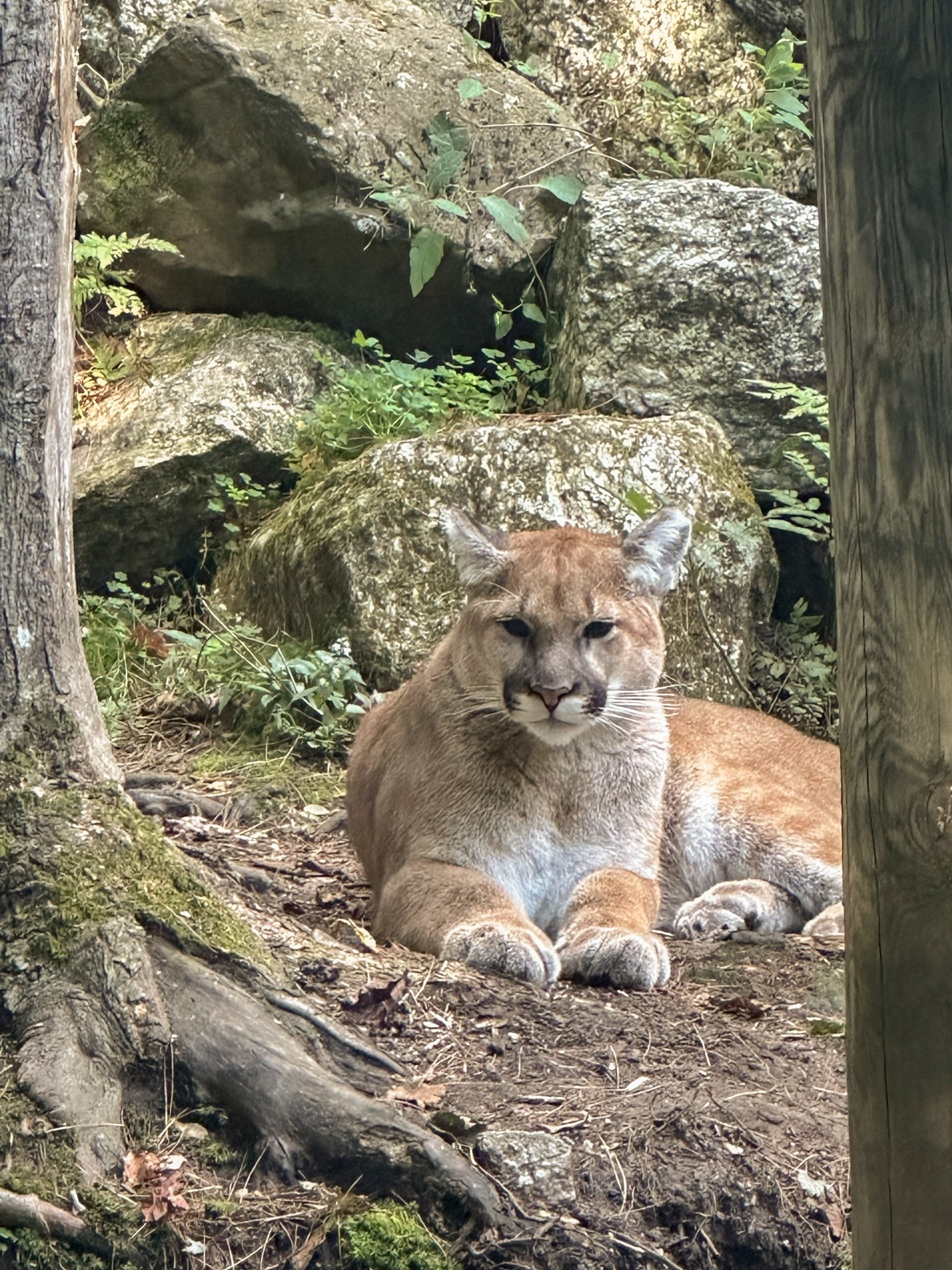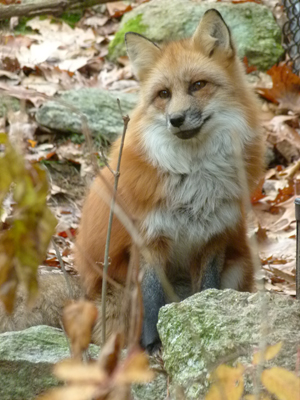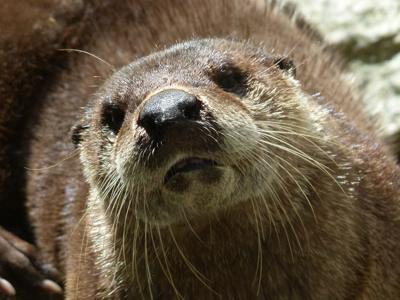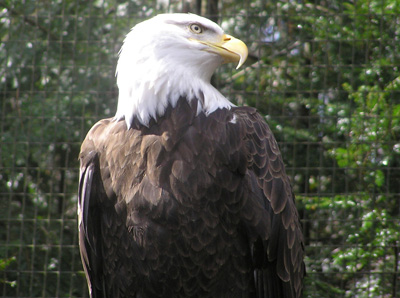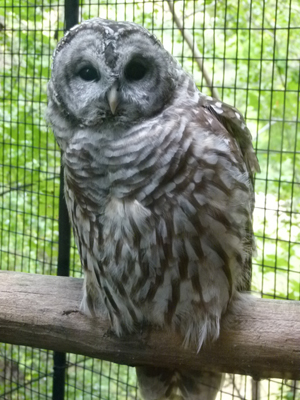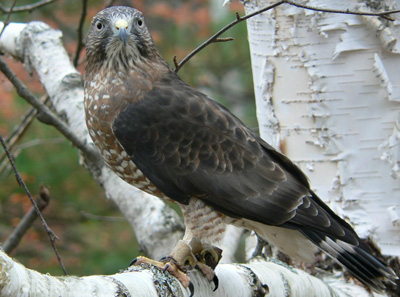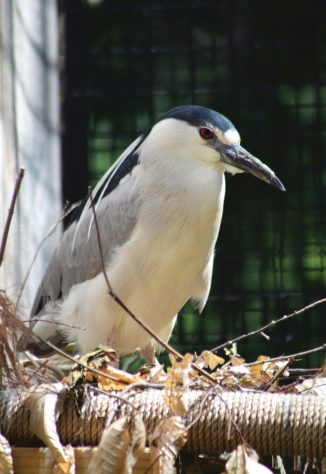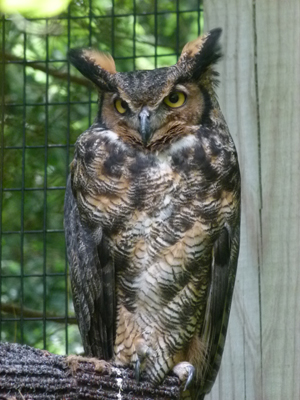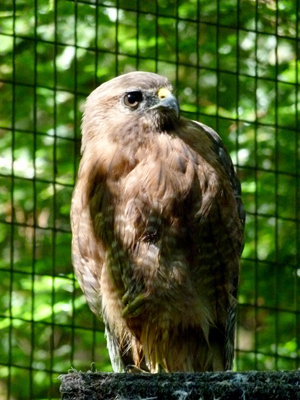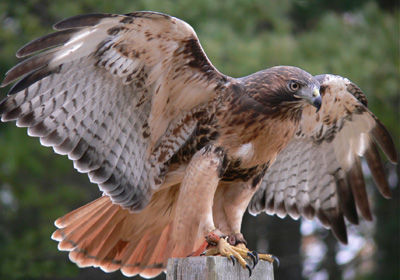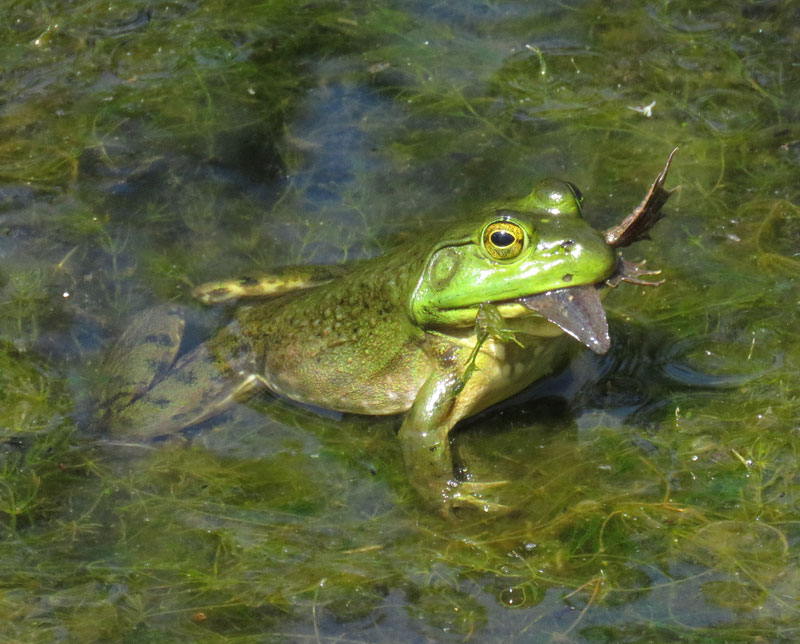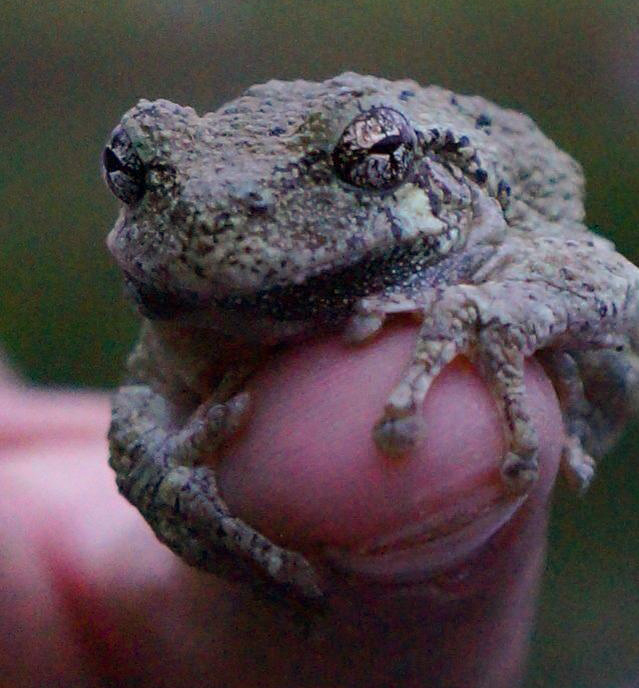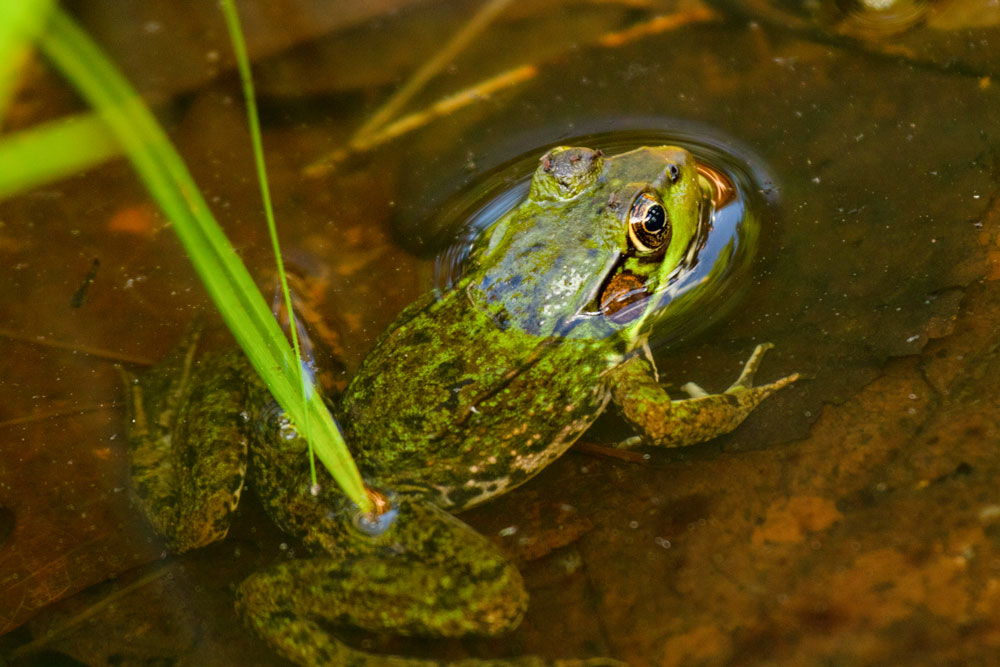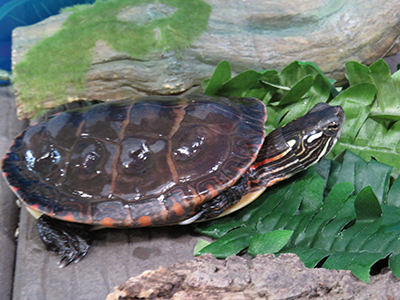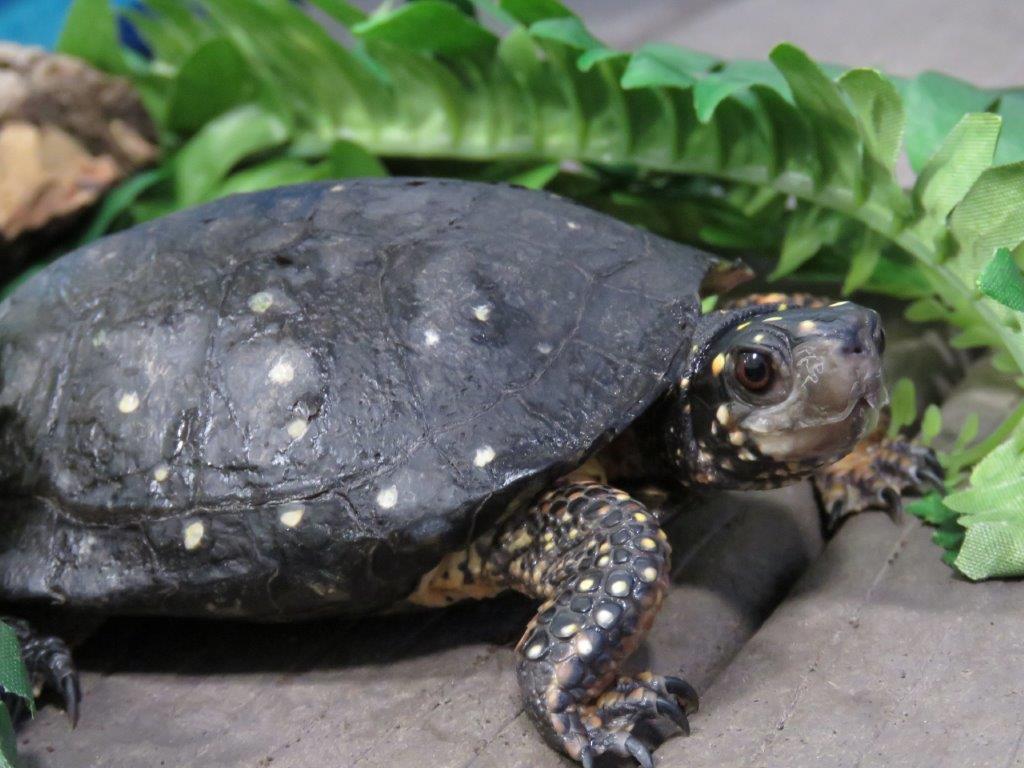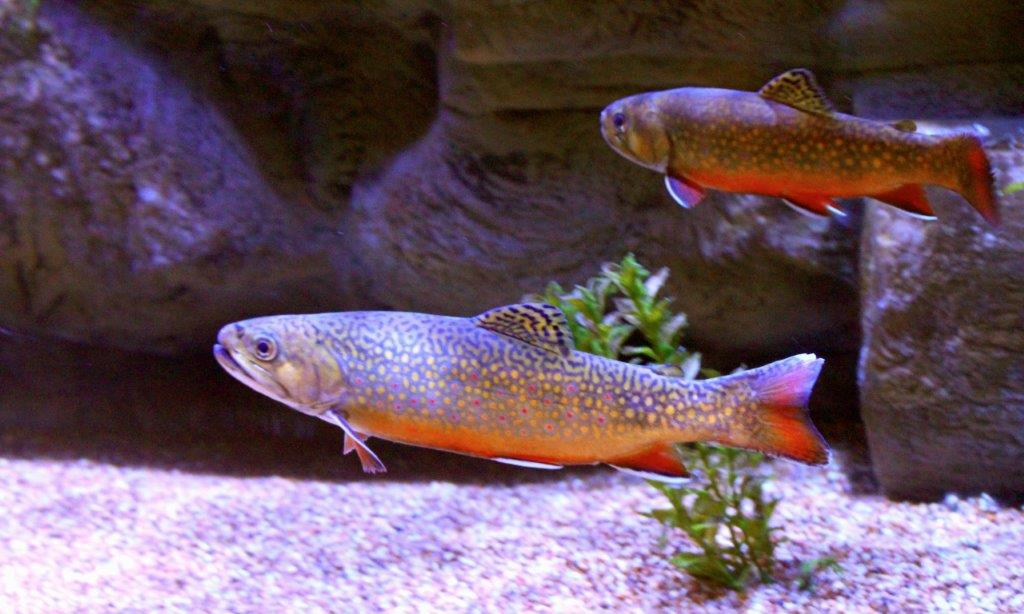White-tailed Deer
Odocoileus virginianus
| Kingdom | Animalia |
|---|---|
| Phylum | Chordata |
| Class | Mammalia |
| Order | Artiodactyla |
| Family | Cervidae |
| Genus | Odocoileus |
| Species | O. virginianus |
| Lifespan | 4-5 years in the wild; 15-20 years in captivity |
| Size | up to 80 inches long, 39 inches at the shoulder, weight 50-300 pounds |
| Offspring | 1-2 fawns, sometimes 3 |
| Status | Common, widespread |
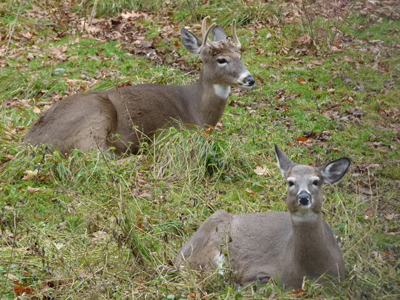
About White-tailed Deer
What are some special characteristics of white-tailed deer?
In summer, deer fur is reddish brown, short and wiry while in winter they grow a thick, gray coat. Winter guard hairs are hollow, providing extra insulation. The belly, throat and underside of the tail are white. Deer are ungulates or hoofed mammals and have pointed cloven hooves. Their large ears and dark nose are distinctive. How can you tell a buck and doe apart? Bucks are larger and vary from 75 to 300 pounds whereas does range from 50 to 200 pounds. Antlers distinguish bucks but each year antlers are shed in early winter.
What is the habitat of the White-tailed Deer?
Deer are found in mixed forest, along the edges of old fields and forest as well as in thicket areas. Depending upon the quality of their habitat, they may have a home range of two to three square miles. In winter, if snow depths exceed 15” deer gather in “deer yards” – areas often with coniferous cover where the snow is less deep and there is protection from wind. Packed trails lead to their winter food supply.
Deer are called browsers. What does that mean?
Browsers eat twigs and buds and a deer’s preferred winter browse comes from white cedar, hemlock and maple. They need about five to nine pounds of food per day in winter. Acorns are a staple food in the fall, with a bonus coming from the fruit of wild apple trees. During the warm months deer will eat tender green grass shoots.
How about the rutting season and raising of the young?
The breeding season or “rut” runs from October to December during this time bucks compete for does. In September the males rub off the velvet that covered their antlers. Healthier bucks have larger antlers and usually this visual sign is enough proof of their strength to other bucks without the need of physical contact, although similar sized bucks may spar with their antlers. Fawns are born in May or June. At first fawns lie hidden, and having no scent initially, their spotted camouflaged coats hide them well. Spots disappear with the first winter coat and fawns remain with the doe for about a year.
Fun Facts!
- Deer have no upper incisors so browsed twig ends are ragged rather than clipped cleanly as by a rabbit or hare.
- Deer have amazing jumping abilities and can soar over an eight foot fence.
- Deer’s eyes are located toward the sides of their head so they have good vision behind them to see predators.
- Noises? There are a wide variety including bleats, whistles, whining sounds, loud snorts and squawks.





